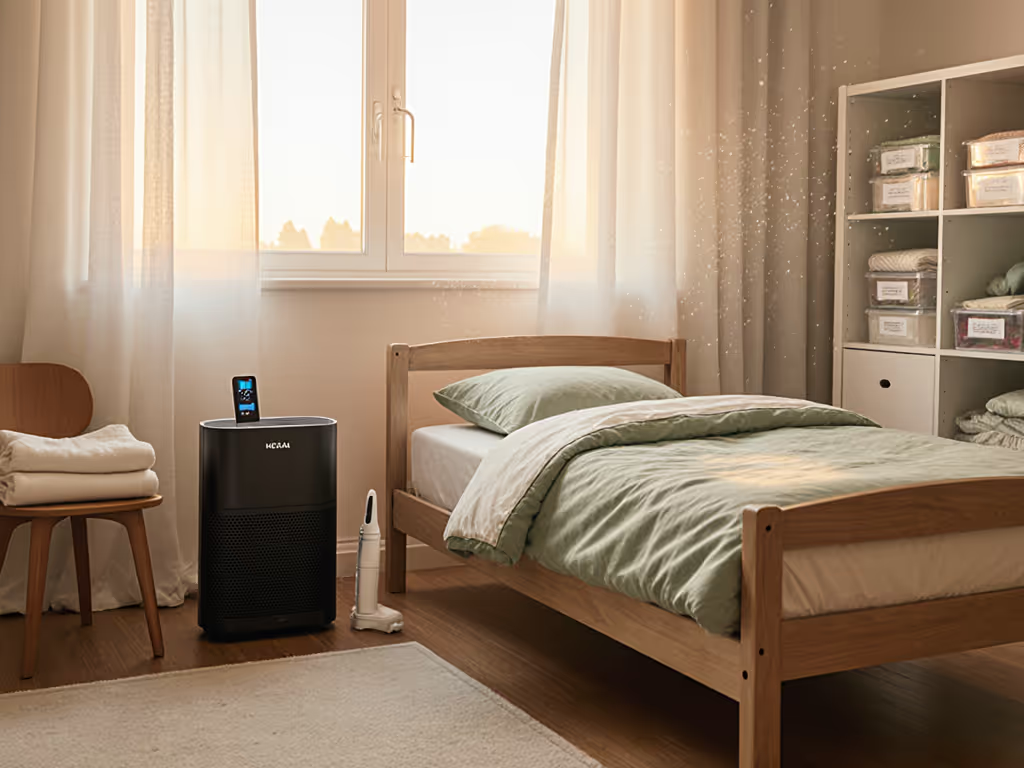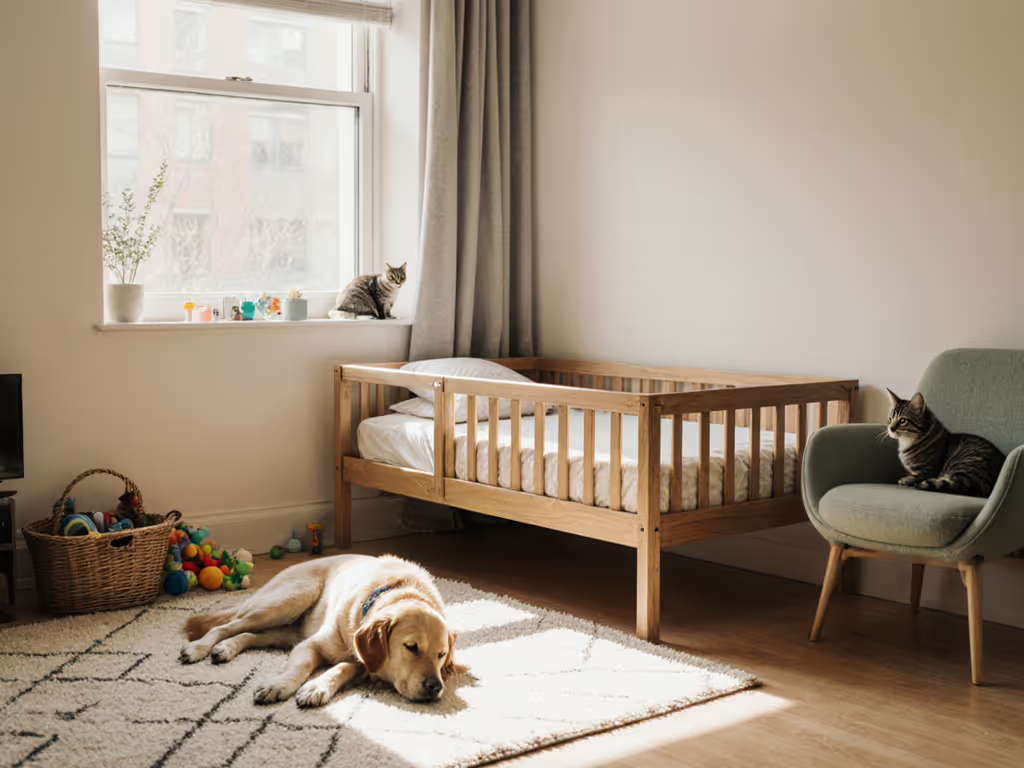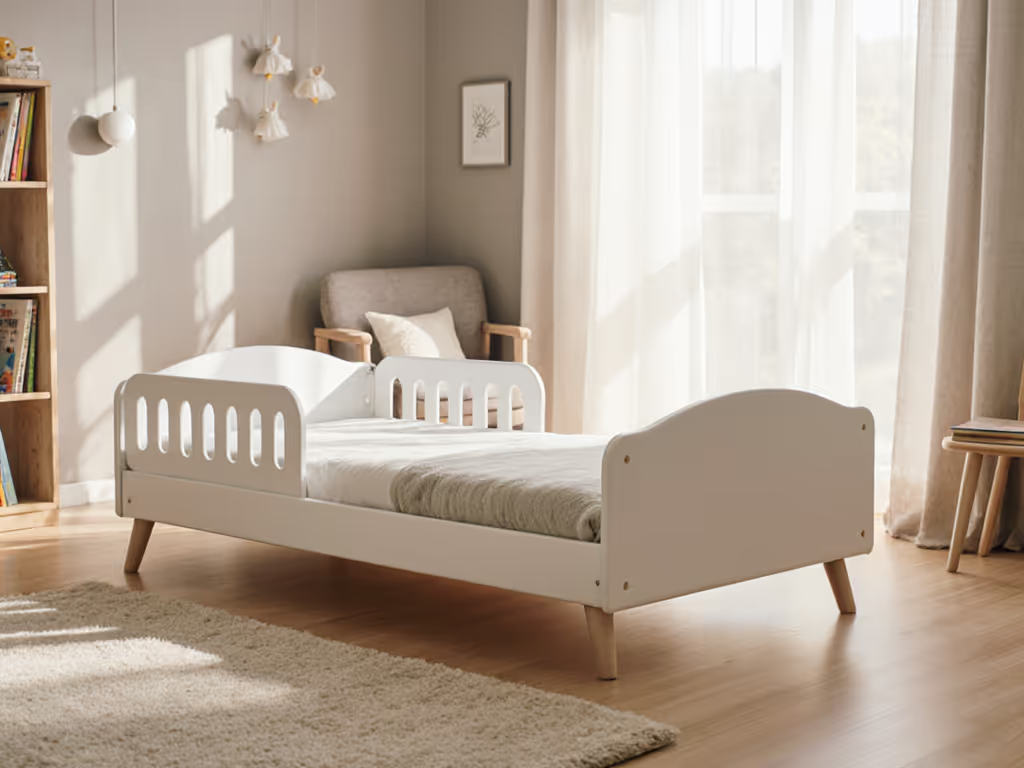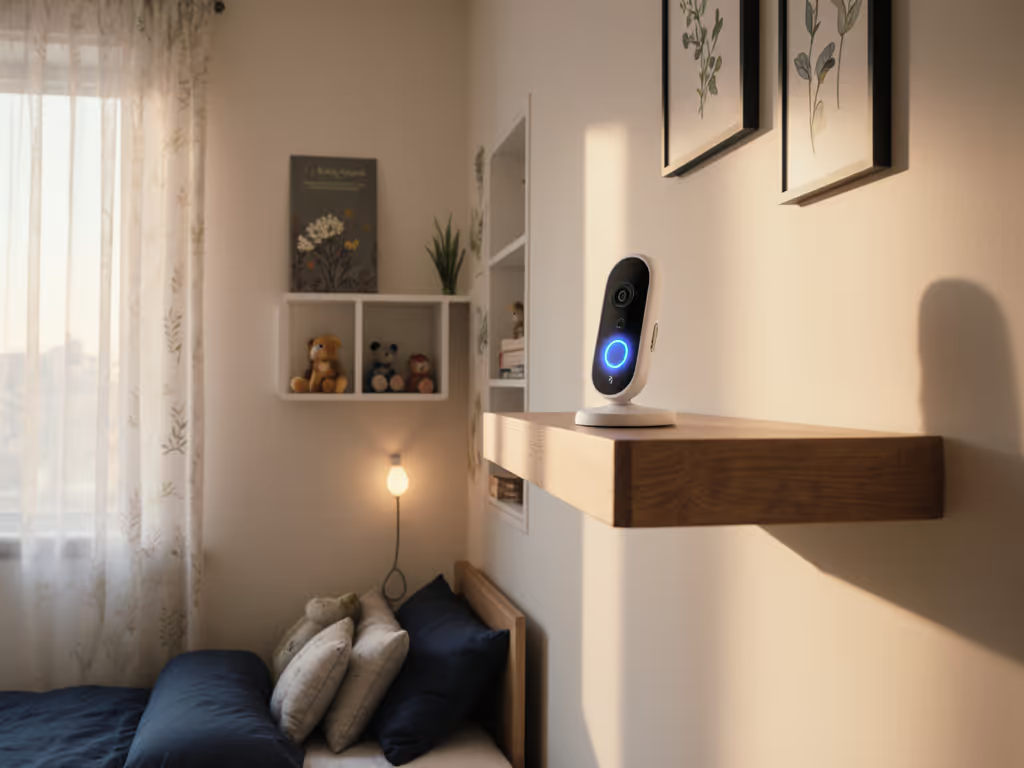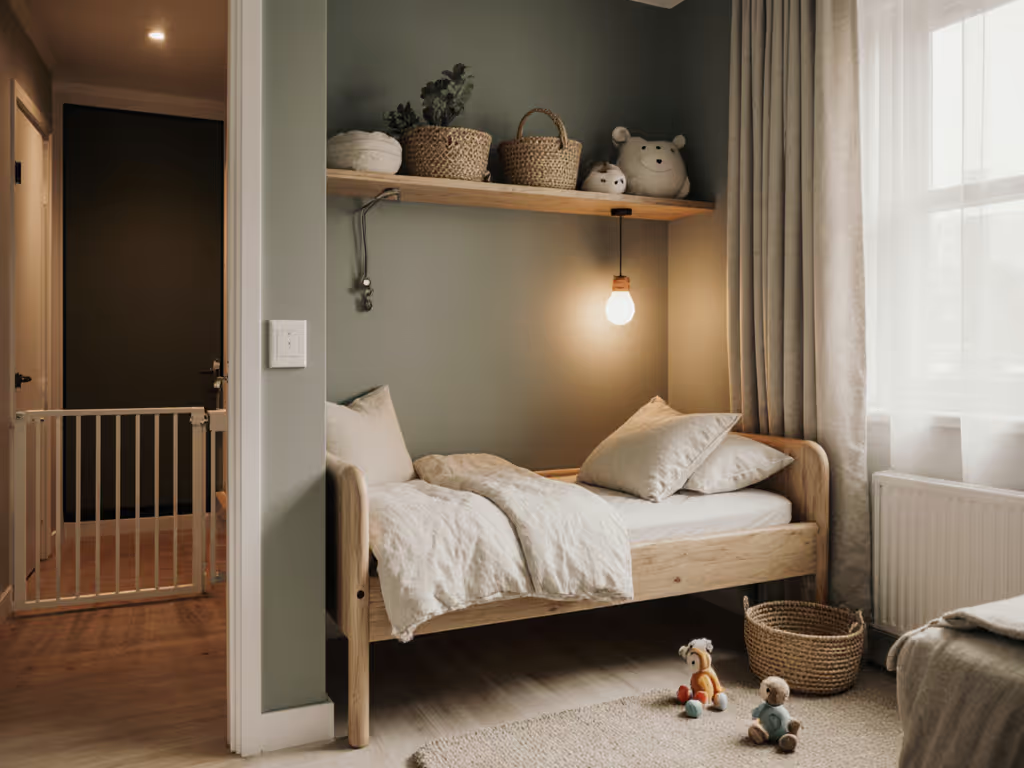
Toddler Bed Rail Installation Guide: Ensuring Safety Standards
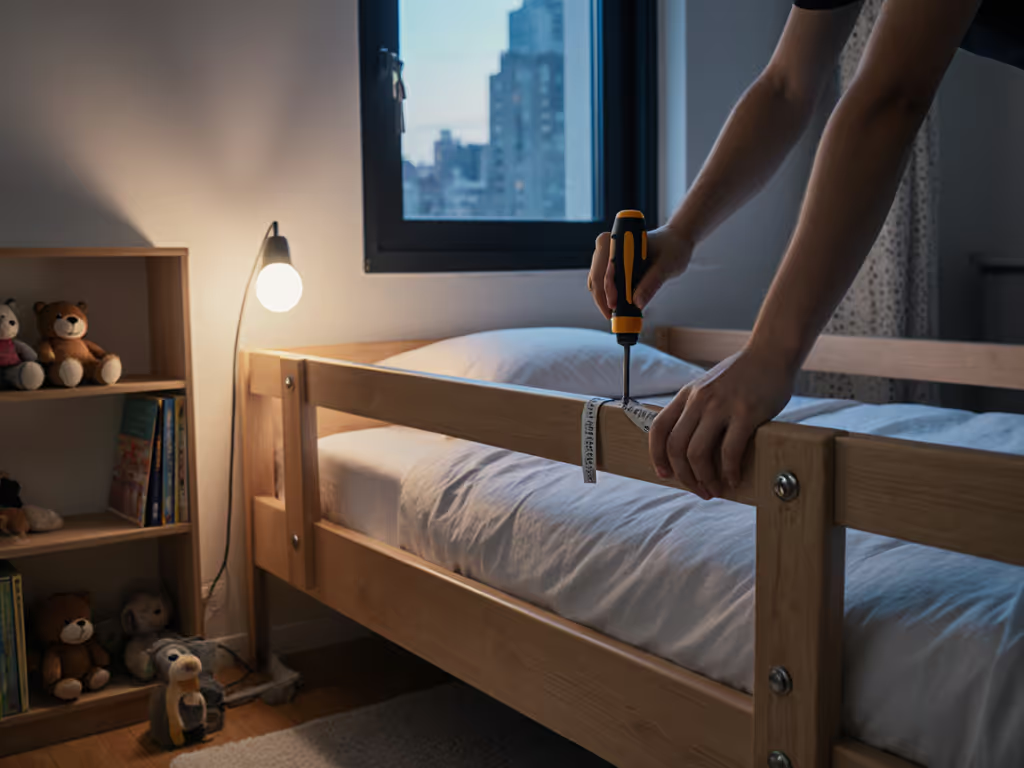
When your toddler transitions from crib to bed, safety becomes a top priority, not just for preventing falls, but for creating a room that supports calm, restful sleep. As both a materials researcher and a parent who's navigated this transition twice, I've learned that proper bed rail installation practices matter as much as the bed itself. Understanding toddler bed rail safety standards isn't just about compliance, it is about building confidence in your child's nighttime environment. For a quick refresher on guardrail height and room layout basics, see the 5-inch guardrail rule. If you can smell it, plan to air it.
Decoding ASTM Bed Rail Standards: What Truly Matters
The ASTM F2085-19 standard sets the benchmark for portable bed rail safety in the United States, codified by the CPSC into federal regulation (16 C.F.R. § 1224). This isn't just industry jargon, it is a comprehensive framework designed to minimize hazards from normal use and foreseeable misuse. If you're comparing beds or rails from abroad, review our US vs EU toddler bed standards for size and certification differences. Unlike older standards, F2085-19 specifically addresses:
- Structural integrity testing with 178 N of force applied to simulate real-world pressure
- Gap safety protocols that prevent head or limb entrapment
- Secure installation requirements that prevent displacement during use
What surprises many parents is that these standards apply specifically to bed rails intended for children who can independently get in and out of bed (typically ages 2 to 5). This crucial distinction means the standard focuses on safety during active use, not containment. The CPSC enforces strict labeling requirements including manufacturer name, contact information, model number, and date of manufacture, all permanently affixed in English.
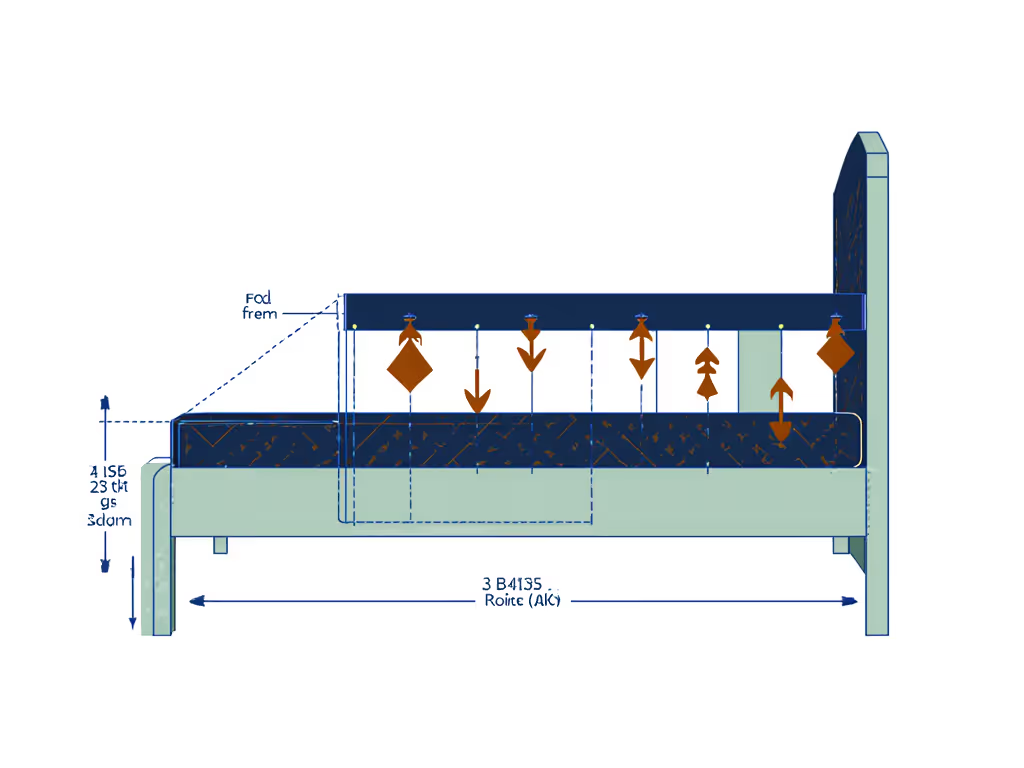
Comparing Installation Approaches: Gaps Versus Security
Proper installation creates the foundation for safe sleep. Through materials testing and field observations, I've identified three critical installation failure points parents commonly encounter:
- The mattress-rail interface: Gaps here create the most serious entrapment risks
- Wall-to-rail contact points: Improper spacing can create dangerous wedges
- Floor stability: Inadequate anchoring causes shifting during active sleep
Technical studies confirm that gaps between the mattress and bed rail exceeding 1.75 inches pose significant entrapment risks (verified using the torso test probe with the taped red end referenced in ASTM documentation). In small-space environments where beds often sit against walls, maintaining at least 2 inches of clearance between the rail's end and wall surface helps prevent creating pinch points that could trap small fingers. For a room-wide safety sweep, follow our childproofing your toddler bedroom checklist.
My off-gassing timeline research shows that even "low-VOC" products need proper airing. One study found 67% of tested products emitted VOCs above recommended levels immediately after unboxing, dropping to 12% after 72 hours of ventilation.
Materials Matter: Beyond Basic Installation
The finish chemistry of your bed rail directly impacts indoor air quality, a concern often overlooked in installation guides. While ASTM standards focus on structural safety, your materials choices affect the invisible environment your child breathes all night. Water-based finishes with third-party certifications (like GREENGUARD Gold) typically off-gas significantly less than solvent-based alternatives.
Consider this solid vs. engineered wood clarity comparison:
- Solid wood with water-based finishes: Minimal off-gassing after 48-72 hours, longer maintenance plan required for scratches
- Engineered wood with low-VOC finishes: Moderate initial off-gassing (3-5 days), but more consistent dimensional stability in varying humidity
- Engineered wood with unknown finishes: Highest risk of prolonged off-gassing, potential formaldehyde emissions
Our first toddler bed arrived smelling like a paint aisle, and this experience taught me that even "certified" products need verification. Renter-friendly installations using non-toxic adhesives or temporary anchors let you maintain safety without permanent modifications to your space.
Verifying Bed Rail Security: A Step-by-Step Approach
Following an installation isn't enough, you must verify. Verifying bed rail security should be part of your nightly routine during the transition period. Pair these checks with an evidence-based bedtime routine to reduce wandering and resistance. This proper bed rail setup checklist takes less than two minutes but provides peace of mind:
- Daily check: Press firmly on the top rail while simulating outward force
- Gap assessment: Use a credit card (approximately 0.03 inches thick) to test for openings
- Mattress displacement test: Have your child sit near the rail while you observe for shifting
- Sensory verification: Check for new odors that might indicate material degradation
The ASTM standard requires bed rails to withstand repeated force applications without hazardous conditions developing. In practice, this means your installation should show no movement when tested with moderate pressure, about the force of a child leaning against it during sleep.
Avoiding Bed Rail Gaps: The Hidden Danger
The most common (and dangerous) installation error is inadequate mattress contact. Bed rails designed for specific bed models often create gaps when used with non-matching mattresses. Generic rails require careful adjustment to maintain continuous contact along the entire length. Remember:
- A 1/4-inch gap might seem negligible but can catch fingers or toes
- Gaps often widen at the head or foot sections where support is weakest
- Temperature fluctuations can cause materials to expand or contract, changing gap dimensions
When we first installed our rails, we discovered a small gap near the headboard that only appeared during the night as the mattress settled. Adding a thin foam buffer between rail and mattress eliminated this hidden hazard, repair beats replace when possible.
Creating Your Maintenance Plan
Safety isn't a one-time installation, it is an ongoing commitment. Use our toddler bed maintenance checklist to schedule tightening, cleaning, and wear inspections. Your maintenance plan should include:
- Weekly structural checks: Tighten hardware, inspect for wear
- Monthly gap assessments: Document measurements to track changes
- Seasonal material evaluations: Note any new odors or finish changes
- Annual hardware replacement: Even quality screws weaken over time
Small-space living demands extra vigilance. In compact rooms where beds sit against walls, regular checks prevent gradual shifting that could create pinch points. This approach aligns with my core belief: healthier materials make calmer rooms. When you eliminate safety concerns and invisible pollutants, you remove stressors that disrupt sleep cycles.
Next Steps for Confident Installation
Understanding the ASTM bed rail standards gives you power to make informed choices.
Remember that the most secure installation combines certified products with informed use. Your child's safety depends not just on what you buy, but how you implement it in your unique living space. When you prioritize both visible and invisible safety factors, you create an environment where restful sleep becomes the norm, not the exception.

